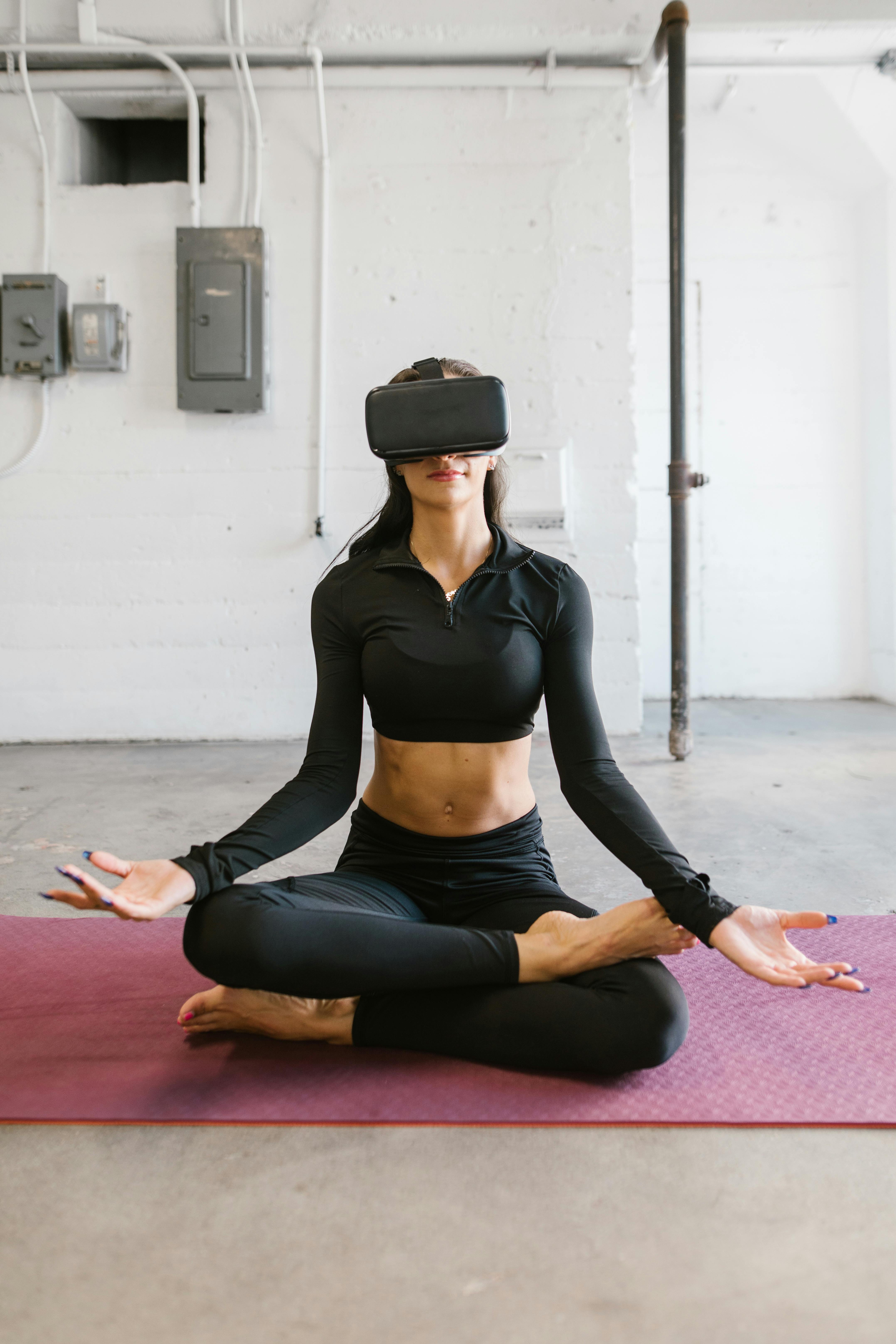Laughter has always been known as the best medicine, and now, there’s a unique way to harness its healing powers – laughter yoga. But what exactly is laughter yoga, and can it really contribute to physical and mental relaxation? Laughter yoga combines laughter exercises with deep breathing and gentle stretches to help release tension, reduce stress levels, and boost mood. In this article, we’ll explore the benefits of laughter yoga and how it can promote relaxation for both your body and mind. So, get ready to embrace your inner child and let the laughter flow!

The Science of Laughter Yoga
Laughter Yoga is a unique and innovative exercise routine that combines laughter with yogic breathing. This combination stimulates the body’s natural relaxation response and promotes physical and mental relaxation. Laughter Yoga has gained popularity worldwide due to its numerous benefits for overall well-being. In this article, we will explore the various benefits of laughter yoga, both in terms of its physical and mental effects. We will also discuss how laughter yoga differs from traditional yoga and how it can be implemented in daily life.
Benefits of Laughter Yoga
Laughter Yoga offers a wide range of benefits that contribute to physical and mental relaxation. It has been found to reduce stress, improve mood, boost the immune system, and enhance overall well-being. When you engage in laughter yoga, you activate your body’s natural relaxation response, leading to a state of relaxation and calmness. The benefits of laughter yoga are not limited to the session itself; they can have long-lasting effects on your overall health and well-being.
Physical Effects of Laughter Yoga
Laughter Yoga has numerous physical effects that promote relaxation. One of the main physical benefits of laughter yoga is its ability to induce deep relaxation by activating the body’s relaxation response. This response leads to the release of endorphins, which are natural painkillers and mood enhancers. Additionally, laughter yoga improves blood circulation, which helps to deliver oxygen and nutrients to the body’s tissues and organs, promoting overall physical well-being.
Mental Effects of Laughter Yoga
Engaging in laughter yoga can have profound effects on your mental well-being. One of the key mental benefits of laughter yoga is the reduction of stress hormones such as cortisol. Laughter yoga triggers the release of endorphins, which counteract the effects of stress hormones, leading to a sense of relaxation and well-being. Laughing also enhances mood and emotional well-being by releasing neurotransmitters that promote happiness and a positive outlook. Furthermore, laughter yoga promotes mindfulness, helping you to stay present and focus on the present moment, which can contribute to mental relaxation.
Physical Relaxation through Laughter Yoga
Laughter yoga incorporates various relaxation techniques that contribute to physical relaxation. These techniques include deep breathing exercises, stretching, and gentle physical movements. Deep breathing with laughter helps to calm the nervous system and reduce muscle tension. Stretching exercises in laughter yoga help to release tension in the muscles and improve flexibility. The combination of these relaxation techniques in laughter yoga promotes physical relaxation, leaving you feeling calm and rejuvenated.
Release of Endorphins
The release of endorphins is a key component of the physical relaxation experienced in laughter yoga. Endorphins are natural chemicals in the brain that act as painkillers and mood enhancers. When you engage in laughter yoga, the physical act of laughing triggers the release of endorphins, leading to feelings of euphoria and relaxation. The release of these natural chemicals helps to reduce pain, promote physical relaxation, and enhance overall well-being.
Improvement in Blood Circulation
Laughter yoga also improves blood circulation, which is essential for overall physical health and relaxation. As you engage in laughter yoga, the physical act of laughing increases heart rate and blood flow throughout the body. This improved blood circulation helps to deliver oxygen and nutrients to the body’s tissues and organs, promoting their proper functioning and overall physical well-being. Improved blood circulation also helps to flush out toxins from the body, leaving you feeling refreshed and rejuvenated.
Mental Relaxation through Laughter Yoga
Laughter Yoga not only promotes physical relaxation but also has profound effects on mental well-being. Engaging in laughter yoga helps to reduce the levels of stress hormones in the body, such as cortisol. Laughter triggers the release of endorphins, which counteract the effects of stress hormones, leading to a sense of relaxation and mental well-being. The act of laughing releases neurotransmitters that promote happiness and a positive outlook, enhancing your mood and emotional well-being. Additionally, laughter yoga promotes mindfulness, enabling you to stay present and focus on the present moment, leading to mental relaxation.
Reduction of Stress Hormones
Laughter yoga has been shown to reduce the levels of stress hormones in the body, such as cortisol. When you engage in laughter yoga, the physical act of laughing triggers the release of endorphins, which counteract the effects of stress hormones. The reduction of stress hormones leads to a state of relaxation and calmness, helping to alleviate anxiety and stress. Regular practice of laughter yoga can have long-lasting effects on stress reduction, allowing you to manage stress more effectively and achieve mental relaxation.
Enhancement of Mood and Emotional Well-being
Laughing has a powerful effect on mood and emotional well-being. When you laugh, your brain releases neurotransmitters such as serotonin and dopamine, which are known as “feel-good” chemicals. These chemicals enhance mood, promote happiness, and reduce feelings of sadness and depression. Engaging in laughter yoga on a regular basis can significantly improve your mood and emotional well-being, leading to a greater sense of relaxation and overall mental well-being.

Promotion of Mindfulness
Mindfulness is the practice of being fully present in the moment and paying attention to your thoughts, feelings, and sensations without judgment. Laughter yoga promotes mindfulness by engaging you in the present moment and helping you focus on the physical act of laughing. When you laugh, you are fully immersed in the experience, which allows you to let go of worries and distractions. This mindfulness practice in laughter yoga promotes mental relaxation, as it helps to calm the mind and bring about a sense of inner peace.
Laughter Yoga vs. Traditional Yoga
Laughter yoga differs from traditional yoga in several ways, particularly in terms of its physical and mental benefits. While traditional yoga focuses on poses and breathwork to promote physical and mental relaxation, laughter yoga incorporates laughter as an integral part of the practice. Both laughter yoga and traditional yoga provide physical relaxation, but laughter yoga offers additional benefits through the act of laughing. In terms of mental relaxation, both practices promote mindfulness and enhance mood, but laughter yoga specifically targets stress reduction and emotional well-being through laughter.
Comparison of Physical Benefits
When comparing the physical benefits of laughter yoga and traditional yoga, both practices offer similar benefits such as relaxation, improved blood circulation, and stress reduction. However, laughter yoga provides additional benefits through the physical act of laughing, including the release of endorphins and the activation of the body’s relaxation response. Traditional yoga focuses more on poses and breathwork, which help to improve flexibility, build strength, and promote overall physical well-being. Ultimately, both laughter yoga and traditional yoga contribute to physical relaxation in their unique ways.
Comparison of Mental Benefits
In terms of mental benefits, laughter yoga and traditional yoga both promote mindfulness and enhance mood. However, laughter yoga specifically targets stress reduction and emotional well-being through laughter. The act of laughing triggers the release of endorphins, which counteract the effects of stress hormones, leading to a state of relaxation and improved mental well-being. Traditional yoga focuses on calming the mind through breathwork and meditation, helping to reduce anxiety, improve focus, and promote overall mental well-being. Both practices offer valuable mental benefits and contribute to mental relaxation.
Overall Relaxation
Both laughter yoga and traditional yoga contribute to overall relaxation, both physically and mentally. When you engage in laughter yoga or traditional yoga, you activate the body’s relaxation response, leading to a state of calmness and relaxation. The physical and mental benefits of both practices help to reduce stress, enhance mood, promote mindfulness, and improve overall well-being. Whether you choose to practice laughter yoga or traditional yoga, incorporating these practices into your daily life can significantly contribute to overall relaxation and a greater sense of well-being.
Implementing Laughter Yoga in Daily Life
Incorporating laughter yoga into your daily life can be a fun and effective way to promote relaxation. One way to integrate laughter yoga into your routine is by incorporating it into your exercise routine. You can add laughter yoga exercises before or after your regular workout to enhance the relaxation and mood-boosting effects. Another way to practice laughter yoga is in social settings, such as with friends, family, or colleagues. Laughing together can create a positive and uplifting atmosphere, promoting relaxation and bonding. Additionally, laughter yoga can be used as a stress management tool. Whenever you feel stressed or overwhelmed, take a few minutes to engage in laughter yoga to release tension and promote relaxation.
Practicing Laughter Yoga in Social Settings
Laughter yoga can be a great activity to practice in social settings. Gather a group of friends, family members, or colleagues and engage in laughter yoga together. You can start with simple laughter exercises, such as the greeting laughter, where you laugh while greeting each other. Another fun laughter exercise is gibberish laughter, where you laugh while speaking in gibberish. These exercises can create a positive and uplifting atmosphere, promote relaxation, and strengthen relationships. Practicing laughter yoga in social settings not only provides physical and mental relaxation but also fosters a sense of community and connection.
Using Laughter Yoga as a Stress Management Tool
Laughter yoga can be an effective stress management tool. When you feel stressed or overwhelmed, take a few minutes to engage in laughter yoga exercises. Deep breathing with laughter is a simple yet powerful technique that helps to calm the nervous system and reduce stress. Take a deep breath, and as you exhale, laugh along with it. Repeat this deep breathing with laughter for a few minutes, focusing on the physical act of laughing and the sensation of relaxation in your body. This laughter yoga technique can help to release tension, reduce stress, and promote relaxation in times of stress.
Laughter Yoga Techniques for Relaxation
In laughter yoga, various techniques can be used to promote relaxation. Greeting laughter is a simple technique where you laugh while greeting someone or even pretending to greet someone. This laughter exercise can create a positive and joyful atmosphere, releasing tension and promoting relaxation. Another laughter yoga technique is gibberish laughter, where you laugh while speaking in gibberish. This technique allows you to let go of inhibitions and release stress through laughter. Deep breathing with laughter is another effective technique for relaxation. Take deep breaths and laugh along with the exhale, allowing yourself to experience the physical and mental benefits of laughter and relaxation.
Greeting Laughter
Greeting laughter is a laughter yoga technique that promotes relaxation and connection. To practice greeting laughter, simply laugh while greeting someone or even pretend to greet someone. This laughter exercise can create a positive and joyful atmosphere, releasing tension, and promoting relaxation. As you laugh while greeting, focus on the physical act of laughing and the sensation of relaxation in your body. Greeting laughter can be practiced alone or in a group, making it a versatile technique for promoting relaxation in various settings.

Gibberish Laughter
Gibberish laughter is a laughter yoga technique that allows you to let go of inhibitions and release stress through laughter. To practice gibberish laughter, simply laugh while speaking in gibberish. Let your mind and body be free to express through laughter, without the need for words or meaning. This laughter exercise helps to release tension, promote relaxation, and unleash the power of laughter. Practice gibberish laughter alone or in a group, allowing yourself to embrace the freedom and joy of laughter without judgment or inhibition.
Deep Breathing with Laughter
Deep breathing with laughter is a powerful technique in laughter yoga that promotes relaxation. To practice deep breathing with laughter, take deep breaths and laugh along with the exhale. As you inhale, imagine breathing in relaxation and calmness, and as you exhale, let out laughter. Focus on the physical act of laughing and the sensation of relaxation in your body. Deep breathing with laughter helps to calm the nervous system, reduce stress, and promote overall relaxation. Practice this technique whenever you need a quick boost of relaxation and joy.
Laughter Yoga for Different Age Groups
Laughter yoga can be enjoyed by people of all ages and offers specific benefits for different age groups. Whether you are a child, adult, or senior, laughter yoga can contribute to physical and mental relaxation.
Laughter Yoga for Children
Children naturally love to laugh and play, making laughter yoga an enjoyable and engaging activity for them. Laughter yoga promotes physical relaxation in children by encouraging movement, stretching, and deep breathing. It also enhances mental relaxation by releasing stress and promoting a positive mood. Children who practice laughter yoga can experience reduced anxiety, improved focus, and enhanced overall well-being. Incorporating laughter yoga into a child’s routine can be a fun and effective way to promote relaxation and instill a positive mindset.
Laughter Yoga for Adults
Adults can benefit greatly from laughter yoga, as it offers both physical and mental relaxation. Engaging in laughter yoga exercises helps adults release tension, reduce stress, and improve overall well-being. The practice of laughter yoga promotes mindfulness and being present in the moment, allowing adults to let go of worries and distractions. By incorporating laughter yoga into their daily lives, adults can experience improved mood, increased energy levels, and enhanced overall relaxation.
Laughter Yoga for Seniors
Laughter yoga is a wonderful activity for seniors, as it promotes physical and mental relaxation in a gentle and enjoyable way. Engaging in laughter yoga exercises helps to improve flexibility, enhance blood circulation, and reduce muscle tension in seniors. The release of endorphins during laughter yoga promotes a positive mood and emotional well-being. Laughing also boosts the immune system, which is beneficial for seniors’ overall health and well-being. Incorporating laughter yoga into their daily routines can help seniors feel more relaxed, energized, and connected with others.
Laughter Yoga as a Complementary Therapy
Laughter yoga can be used as a complementary therapy in various settings, particularly in mental health treatment and pain management.
Laughter Yoga in Mental Health Treatment
Laughter yoga has been recognized as a beneficial component in mental health treatment. It helps to release stress, reduce anxiety, and alleviate symptoms of depression. Engaging in laughter yoga exercises promotes the release of endorphins and neurotransmitters that enhance mood and emotional well-being. By incorporating laughter yoga into mental health treatment plans, individuals can experience improved relaxation, increased resilience, and better overall mental well-being.
Laughter Yoga in Pain Management
Laughter yoga can also be used as a complementary therapy in pain management. When you engage in laughter yoga, the physical act of laughing releases endorphins, which act as natural painkillers. These endorphins help to reduce pain and promote relaxation. Engaging in laughter yoga exercises alongside traditional pain management techniques can provide additional relief and enhance overall well-being.
Laughter Yoga for Overall Well-being
Laughter yoga contributes to overall well-being by promoting relaxation, reducing stress, and enhancing mood. Whether used as a complementary therapy or practiced regularly as a standalone activity, laughter yoga provides countless benefits for physical and mental well-being. By incorporating laughter yoga into your daily life, you can experience improved overall well-being, increased relaxation, and a greater sense of joy and connection with others.
Precautions and Considerations in Laughter Yoga
While laughter yoga is generally safe and enjoyable for most individuals, there are some precautions and considerations to keep in mind, especially for individuals with physical limitations or mental health conditions.
Laughter Yoga for Individuals with Physical Limitations
Individuals with physical limitations should approach laughter yoga with caution and adapt exercises to their specific needs. If you have any existing injuries, chronic conditions, or physical disabilities, it is essential to consult with a healthcare professional before engaging in laughter yoga. They can provide guidance on modified exercises and ensure your safety. Remember to listen to your body and only engage in laughter yoga exercises that are comfortable and suitable for your physical abilities.
Laughter Yoga for Individuals with Mental Health Conditions
Laughter yoga can be a beneficial practice for individuals with mental health conditions. However, it is crucial to consider individual needs and consult with a mental health professional before incorporating laughter yoga into a treatment plan. Some individuals may require modifications or additional support. A mental health professional can provide guidance on how to adapt laughter yoga exercises to specific mental health conditions and ensure they align with other treatment strategies.
Seeking Professional Guidance
If you are uncertain about how to practice laughter yoga or have specific concerns, seeking professional guidance from a qualified laughter yoga instructor or healthcare professional is advisable. Certified laughter yoga instructors can provide expert guidance on techniques, safety precautions, and modified exercises. They can also ensure that you are practicing laughter yoga in a way that is appropriate for your specific needs and goals.
Conclusion
In conclusion, engaging in laughter yoga can contribute to both physical and mental relaxation. The unique combination of laughter and yogic breathing in laughter yoga stimulates the body’s natural relaxation response, leading to a state of calmness and well-being. This practice offers numerous benefits, including physical relaxation through techniques such as deep breathing and the release of endorphins. It also promotes mental relaxation by reducing stress hormones, enhancing mood and emotional well-being, and promoting mindfulness. Whether practiced as a standalone activity or used as a complementary therapy, laughter yoga provides a fun and effective way to promote overall relaxation. So why not give it a try and experience the joy and relaxation that laughter yoga can bring to your life?
